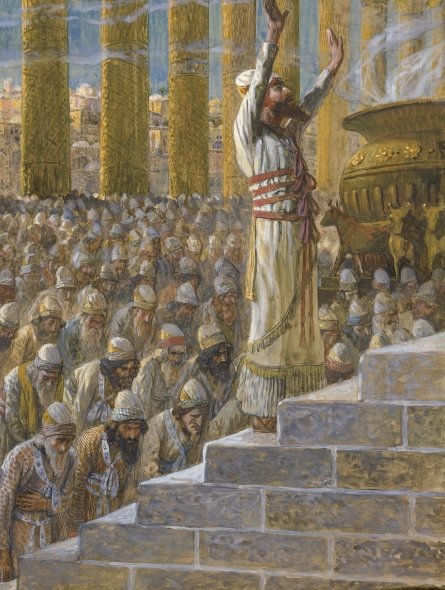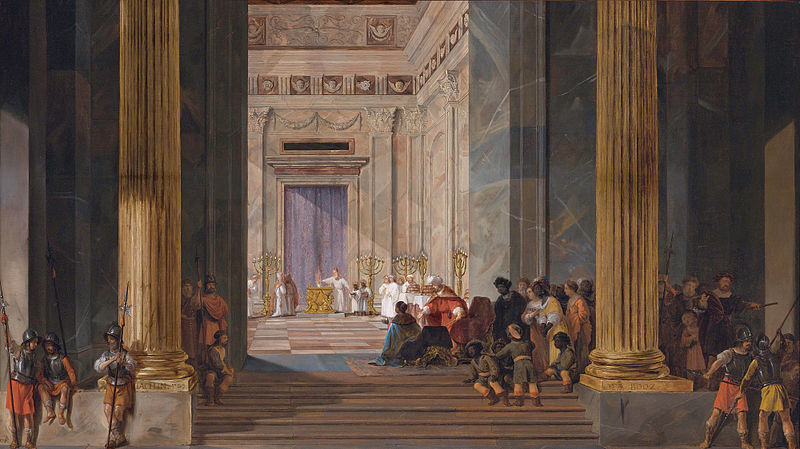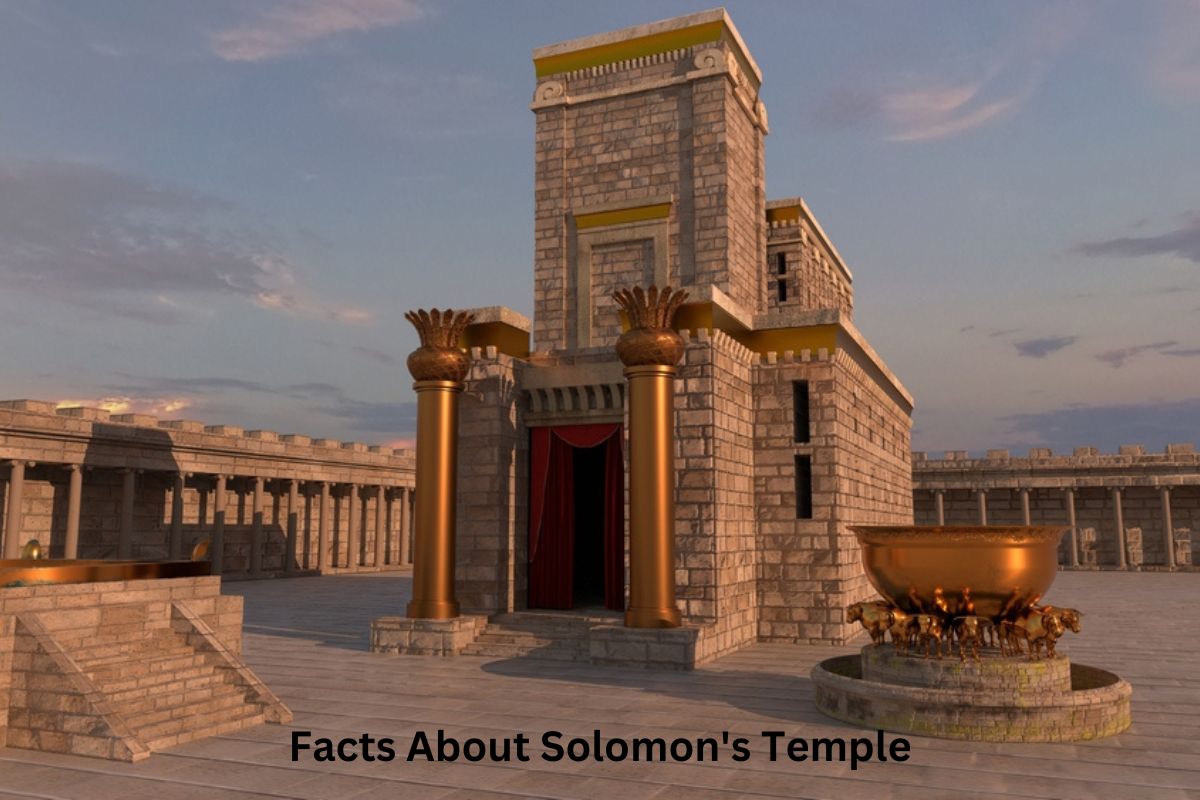Solomon’s Temple, also known as the First Temple, was a remarkable religious structure built in ancient Jerusalem around 957 BCE by King Solomon. It served as the central place of worship for the Israelite people and housed the revered Ark of the Covenant.
The temple was renowned for its opulence, using premium materials such as cedar wood, stone, gold, and bronze. Its design consisted of three main parts: the outer courtyard, the Holy Place, and the Holy of Holies.
Although it was ultimately destroyed by the Babylonians in 586 BCE, Solomon’s Temple continues to hold significant religious and historical importance in Judaism, Christianity, and Islam. Excavations in Jerusalem have provided valuable insights into its history and architecture.
Solomon’s Temple Facts
1. Built by King Solomon around 957 BCE
Solomon’s Temple, also known as the First Temple, was constructed by King Solomon, who ruled the Israelite kingdom in the 10th century BCE.
Also Read: Facts About King Solomon
Solomon is traditionally credited with the temple’s construction, which was a grand project intended to honor God and centralize worship for the Israelite people. It is a significant landmark in the history of ancient Israel.

2. Purpose: House the Ark of the Covenant and serve as a place of worship
The primary purpose of Solomon’s Temple was to provide a permanent dwelling place for the Ark of the Covenant. The Ark was a sacred container that held the stone tablets inscribed with the Ten Commandments and was considered the symbol of God’s presence among the Israelites.
The temple was designed to be a place of worship and sacrifice, where the Israelites could offer prayers and conduct religious ceremonies.
It was considered the holiest site in Judaism, and only the high priest could enter the innermost chamber, the Holy of Holies, where the Ark was kept, and only on the Day of Atonement.
3. Constructed with cedar wood, stone, gold, and bronze
Solomon’s Temple was renowned for its opulence and use of premium materials. Cedar wood, imported from Lebanon, was used for the construction of the temple, and the stone used was of high quality.
Also Read: Timeline of King Solomon
The interior of the temple was adorned with gold, including the walls and various furnishings. Bronze was also used extensively, particularly for the altar and various implements used in religious rituals.
The temple’s lavish materials and intricate craftsmanship reflected the Israelites’ desire to honor God with the finest offerings and craftsmanship of their time. This level of opulence contributed to its reputation as a magnificent and awe-inspiring structure in the ancient world.
4. Three main parts: outer courtyard, Holy Place, Holy of Holies
Solomon’s Temple was designed with a specific layout consisting of three main parts:
- Outer Courtyard: The outer courtyard was the largest section of the temple complex. It was an open area surrounded by walls and served as a gathering place for worshippers and where various religious ceremonies took place.
- Holy Place: Beyond the outer courtyard was the Holy Place, an inner chamber where priests performed regular religious rituals. It housed various sacred objects and was a place of worship accessible to priests and Levites. It was considered holy but not as sacred as the Holy of Holies.
- Holy of Holies: The Holy of Holies, also known as the inner sanctum or the most holy place, was the innermost chamber of the temple. It was the holiest part of the temple and housed the Ark of the Covenant. Access to the Holy of Holies was extremely restricted, with only the high priest allowed to enter, and that only once a year on the Day of Atonement. It symbolized the direct presence of God among the Israelites.

5. Estimated dimensions: 90x30x45 feet
While the exact dimensions of Solomon’s Temple are not provided in the Bible, scholars and historians have made estimations based on historical records and archaeological findings.
It is generally believed that the temple was approximately 90 feet in length, 30 feet in width, and 45 feet in height. These dimensions reflect the grandeur and significance of the temple as a monumental religious structure in ancient Jerusalem.
6. Construction took seven years with a large workforce
The construction of Solomon’s Temple was a massive undertaking that spanned seven years, showcasing the dedication and commitment of King Solomon and the Israelite people to their religious beliefs.
A vast workforce was employed in its construction, including skilled craftsmen, laborers, and workers. Additionally, King Hiram of Tyre provided valuable assistance by supplying materials and skilled artisans from Tyre, further highlighting the importance of the temple in the region.
The construction process was a testament to the Israelites’ desire to create a magnificent house of worship for God, and it remains an enduring symbol of their faith and devotion.
7. Destroyed by the Babylonians in 586 BCE
Unfortunately, Solomon’s Temple met its demise when the Babylonians, led by King Nebuchadnezzar II, conquered Jerusalem in 586 BCE. During the siege, the temple was plundered and ultimately destroyed by fire.
This catastrophic event is known as the Destruction of the First Temple or the First Temple’s Fall. It marked a profound tragedy in Jewish history and had far-reaching consequences for the Israelites.

8. Replaced by the Second Temple after the Babylonian Exile
Following the Babylonian Exile, which saw many Jews being taken captive to Babylon, a period of Persian rule under King Cyrus the Great allowed the Israelites to return to their homeland.
Under the sponsorship of King Cyrus and later rulers, including King Darius I, they began rebuilding the temple on the same site. This second temple is known as the Second Temple and is sometimes referred to as the Herodian Temple because it was later expanded and renovated by King Herod the Great.
9. Holds religious significance in Judaism, Christianity, and Islam
Solomon’s Temple holds profound religious significance across different faiths:
- Judaism: Solomon’s Temple is considered the most sacred place in Jewish history, as it was the central location for the worship of God and the dwelling place of the Ark of the Covenant. The destruction of the First Temple is commemorated on the Jewish holiday of Tisha B’Av, and the longing for the rebuilding of the temple is a central theme in Jewish prayers and traditions.
- Christianity: While not central to Christian theology, Solomon’s Temple is referenced in the New Testament, especially in discussions about the temple in Jerusalem during the time of Jesus. It serves as a historical and cultural backdrop in the Gospels and the Book of Acts.
- Islam: In Islamic tradition, Solomon’s Temple is believed to have been a place of worship to Allah, and it is associated with the Prophet Solomon (Sulaiman in Islam). The Quran mentions Solomon’s construction of a magnificent temple.
10. Some archaeological discoveries related to the temple have been made in Jerusalem
Although the original Solomon’s Temple no longer exists, archaeological excavations in Jerusalem have uncovered artifacts and structures related to the First Temple period.
These discoveries include remnants of the temple’s foundation and some of its furnishings, offering valuable insights into its architecture and religious practices during that era.
These archaeological findings provide tangible evidence of the historical and religious importance of Solomon’s Temple and contribute to our understanding of ancient Jerusalem’s rich history.
